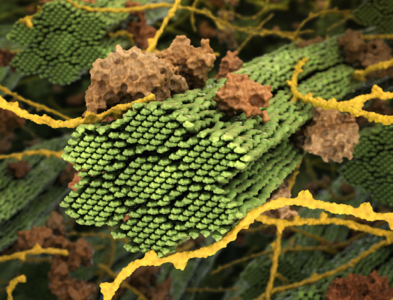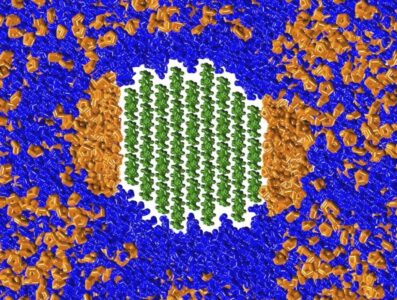The Solvent Disruption of Biomass and Biomembrane Structures in the Production of Advanced Biofuels and Bioproducts Science Focus Area (SFA) provides fundamental knowledge about how solvents alter the structures of critical biomolecular assemblies that compose plant cell walls and microbial membranes.
These structural changes play a crucial role in improving biomass pretreatment and deconstruction while addressing challenges like reduced product yields caused by solvent-induced membrane destabilization during fermentation. This research is critical for improving biomass pretreatment, deconstruction, and fermentation efficiency, which are key steps in producing biofuels and bioproducts.
Key Focus Areas

Our overarching hypothesis is that knowledge of partitioning or binding the solvent from the bulk phase to biomass or biomembranes can help predict maximal or minimal disruption.
Understanding Solvent Effects: Investigating how solvents interact with biomass and membranes to predict and optimize disruption levels. Amphiphilic solvents, with both hydrophobic and hydrophilic properties, are a major area of study for their potential to maximize efficiency.
Common Biophysical Principles: Identifying the molecular forces and principles that drive solvent disruption, as well as the use of shared approaches, to determine microbial tolerance and support the eventual design of better co-solvents for biomass pretreatment.
Research Approach
The integrated research program is organized into three principal tasks:
Sample Design: Designing and creating samples, including deuterium labeling to fully utilize neutron scattering.
Experimental Analysis: Using neutron and x-ray scattering and NMR to study interactions of natural and deuterium-labeled materials.
Simulation & Modeling: Uncovering the underlying molecular forces behind solvent disruption.
Our multidisciplinary program combines advanced tools and expertise. We integrate the power of world-class neutron scattering capabilities available at the Spallation Neutron Source and the High Flux Isotope Reactor with the use of leadership-class supercomputing facilities at Oak Ridge National Laboratory (ORNL). These capabilities are complemented by expertise in biodeuteration, biomembranes, and bacterial membrane engineering at ORNL, plant cell wall physical chemistry at the University of Tennessee, and preparing and interpreting in vitro small-angle neutron scattering membrane samples and data at the University of Cincinnati.
This research is funded by the U.S. Department of Energy’s Genomic Science Program within the Office of Biological and Environmental Research.
